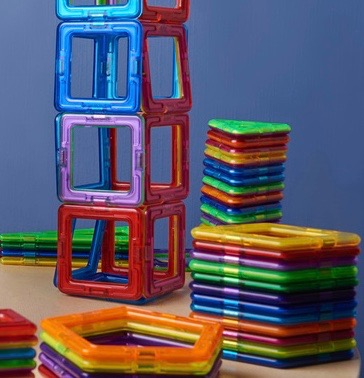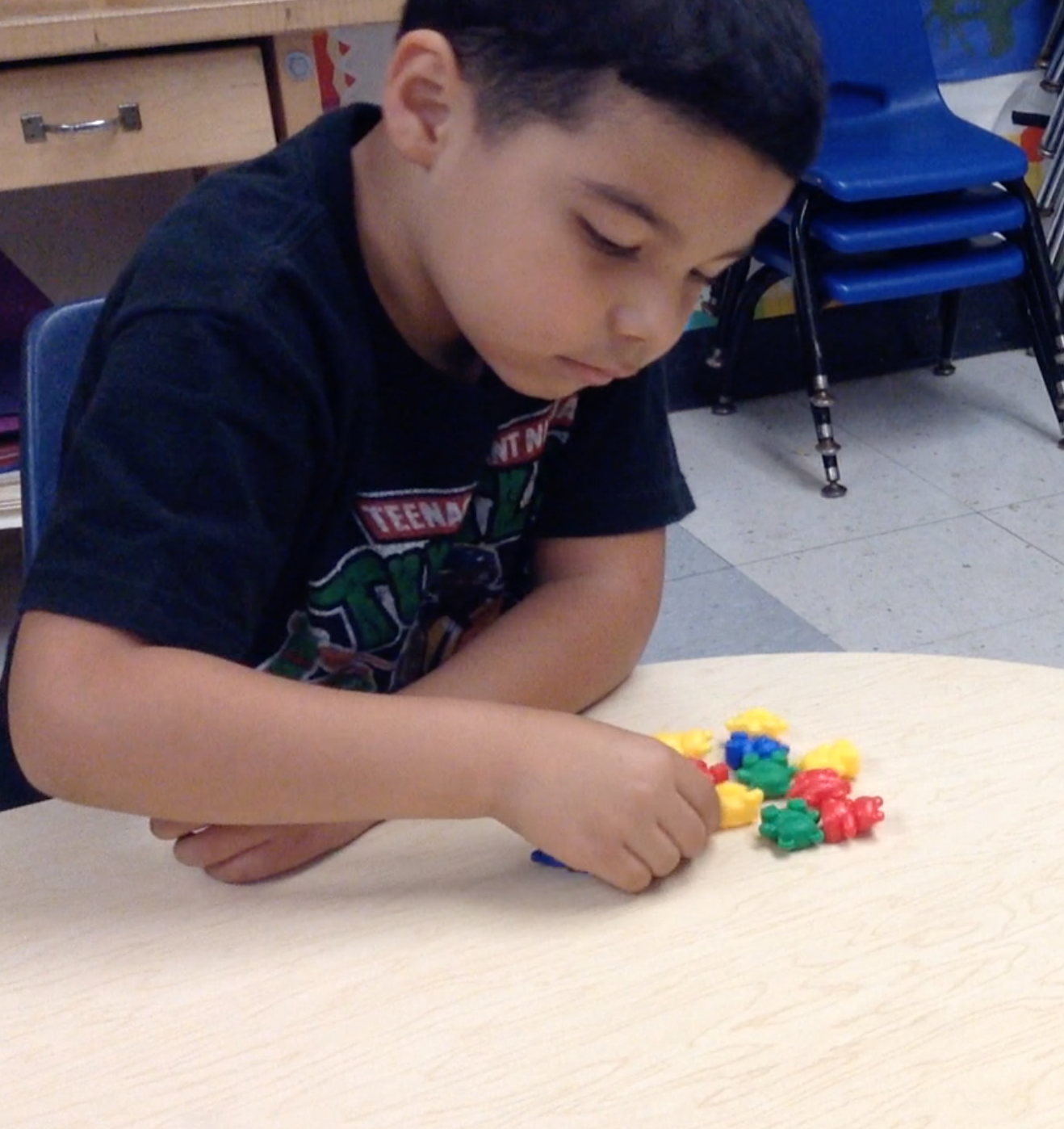An accessible overview of the mathematics of operations. Patterning, decomposition, place value, and equivalence are all key ideas underlying an understanding of operations.
So, what are operations?
Just the word operations can be intimidating! What does it mean? Perhaps the simplest definition is that operations are mathematical processes or activities used to solve problems. (In fact, the root word, operari, means to work!) We use such mathematical activities as adding, subtracting, multiplying and dividing to solve problems. For example, Erik has six chickens in his barn, and Xochitl gives him four more. How many chickens does Erik have now? To find out, he uses a counting on strategy in this adding activity, counting on from six “Six, seven, eight, nine, ten.” Later on, Teacher Leticia tells Erik that he needs to share the chickens with Xochitl. To solve this problem, he uses fair-sharing to divide the chickens evenly with her. In both instances, Erik is using operations to solve his everyday classroom problems.
Patterns and Structure
 As an adult, you probably remember having to memorize the number properties (e.g., commutative, associative). Their names may be daunting, but understanding the properties is useful. They describe patterns and structure in operations that lay the foundations for later mathematical learning. For young children, remembering the names of the properties is not important, but understanding the mathematics of these properties is important. Supporting conversations like these can be useful:
As an adult, you probably remember having to memorize the number properties (e.g., commutative, associative). Their names may be daunting, but understanding the properties is useful. They describe patterns and structure in operations that lay the foundations for later mathematical learning. For young children, remembering the names of the properties is not important, but understanding the mathematics of these properties is important. Supporting conversations like these can be useful:
Teacher Leticia: We know that if Tomi adds his two magnetic square tiles to Anu’s four tiles, they’ll have six tiles, enough to create a cube. But what would happen if Anu added her four tiles to Tomi’s two? Would they have the same or a different amount than they would have if Tomi gave his tiles to Anu? Does it work this way every time we put two groups together? (Commutative Property of Addition)
Teacher Leticia: If Tomi has four tiles and Anu gives him two more and then Anu changes her mind and takes them back, how many would Tomi have? What if Tomi started with five tiles? How many would he have if Anu gave him two and again changed his mind and took the two back? (Inverse Property of Addition)
What sorts of later mathematics learning do these activities and conversations support? The concepts involved in properties are about patterns. Being able to identify, use, and create these patterns can make problem-solving easier and can lay the foundation for later work on algebra.
If we need five chairs for each table, how many would we need for two tables? How about for three tables? Is there a pattern here? Let’s look at these numbers in a t-chart:
While we wouldn’t provide children with the equations that show the patterns in the chart, we can see that if a is the number of tables we have and b is the number of chairs, we could use this table to figure out how many chairs are needed for any number of tables through this equation: a x 5 = b.
Decomposition
As children gain more experience counting sets they begin to discover the pairs of numbers that together make other, larger numbers. Sets of one, two, three, and four objects can be combined in different ways to make a set of five objects. Likewise, the numerals 1, 2, 3, and 4 can be combined in a variety of ways to sum to five. The numerals that together make ten are especially useful. Knowledge of these combinations can support addition strategies in the early elementary grades. Solving 17 + 8 by adding 17 and three to make 20, and then adding the remaining five is a strategy that is more efficient than counting on from 17. Another efficient strategy that uses decomposition with this same set of addends is adding together 10 and 15 (breaking the 17 into 10 and seven and using knowledge of basic addition facts to add seven and eight together).
Place Value
Our base-ten system is a “place value” system. The quantity indicated by a numeral depends on its place in the number. Because of this, we spend a lot of time in classrooms helping children understand place value. To lay the foundation for learning place value teachers can provide activities that include decomposition of sets and numerals, where students can divide a set of 48 objects into four groups of ten and one group of eight in order to count more efficiently (by tens to 40 and then ones to 48). We talk about the numeral 1 in the number eighteen (18) as representing ten because of its location or place in the number (hence the term place value). However, place value is not explicit in the number words in many languages. In particular, English fails to make obvious the relationship between the word eleven and the fact that 11 represents 10 and 1. Some languages do make this relationship explicit, where the word that represents the numeral 11 is the equivalent of ten-one. While all students across the world need to grapple with place value, those students speaking languages in which the relationship is explicit have it a little easier.
Equivalence
Young children can have very flexible informal notions of equivalence (certainly supported by their beliefs in fair-sharing). However, frequently, when first encountering equivalence in formal mathematics in the classroom, they are exposed to only stereotypical representations of equivalence (2 + 3 = 5). This repeated exposure can encourage students to think of the problem as “do something with the numbers on the left and then put the answer on the right side of the equals sign.” When children learn this pattern of thinking, they fail to learn the true meaning of the equal sign, that everything on the left of the symbol must be equivalent to everything on the right. Children can understand so much more. Teaching equivalence by encouraging students to think of the equals sign as meaning “is the same amount as” can both reduce misunderstandings, but also set the stage for later algebraic thinking (______ = 5 – 3).



